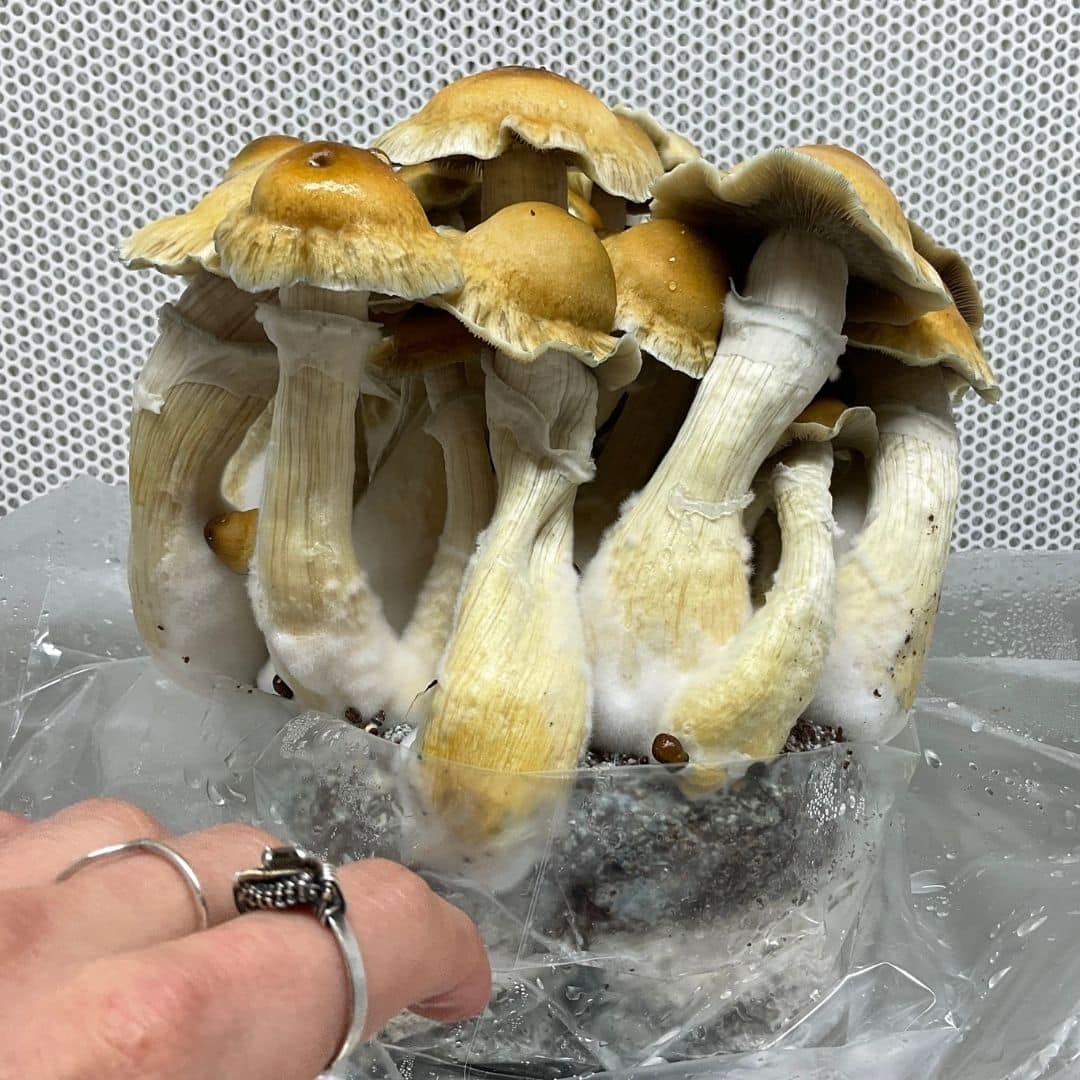Hillbilly Pumpkin
Hillbilly Pumpkin Mushroom Information
- Origin: USA
- Founder: Mycology Mage
- Strength: Average
- Effects: Euphoria, warm body feeling, deep contemplative thoughts
Description
Hillbilly Pumpkin Mushroom: A Comprehensive Guide to Origins, Potency, and Unique Traits
The Hillbilly Pumpkin Mushroom (Psilocybe cubensis) is a captivating strain celebrated for its whimsical appearance, beginner-friendly cultivation, and niche appeal among microdosing enthusiasts. This SEO-optimized guide dives deep into its origins, potency, cultivation methods, and standout features, offering a detailed resource for mycologists, cultivators, and psychedelic explorers.
Origins: A Southern Mystery
The Hillbilly Pumpkin strain traces its roots to the original Hillbilly strain, first cultivated in the late 1990s by a Mycotopia user known as “Hillbilly” in Arkansas, USA. The Pumpkin variant emerged as a genetic offshoot when a cultivator named “Mycology Mage” isolated spores from a rare “fatass” phenotype—a mushroom with a pumpkin-like shape—leading to its distinct lineage. Despite its Southern-inspired name, the exact origin story remains shrouded in folklore, with theories ranging from Appalachian foraging to crossbreeding experiments
Appearance: A Visual Feast
The Hillbilly Pumpkin Mushroom is instantly recognizable for its striking aesthetics:
- Cap: Large, round, and wavy-edged, resembling miniature pumpkins. Colors range from light caramel to golden brown.
- Stem: Thick, robust, and white, contrasting vividly with the cap.
- Size: Some specimens weigh over 200 grams fresh, with caps as wide as a bowling ball.
Its whimsical look has earned it accolades in psychedelic competitions, including a “Best in Show” nomination at Colorado’s Psychedelic Cup
Potency: Subtle Strength for Microdosing
While not a heavyweight in the psilocybin world, Hillbilly Pumpkin’s low potency (≤0.60% total tryptamines) makes it ideal for microdosing. Key traits include:
- Gentle Effects: Users report mild euphoria, enhanced creativity, and “audio hallucinations” like laughter or heightened music appreciation.
- Microdose-Friendly: Large fruiting bodies simplify accurate dosing (e.g., 0.05–0.15g dried for sub-perceptual effects).
- Unique Chemistry: Lab tests reveal elevated norpsilocin (4-HO-NMT), a compound linked to milder cognitive effects, enhancing its microdose appeal.
Comparatively, it’s stronger than Golden Teachers but milder than Penis Envy or Panaeolus cyanescens
Hillbilly Effects
The Hillbilly mushroom has a reputation for providing a warm, euphoric, and balanced visual and thought-provoking experience.
Growing Hillbilly Pumpkin Mushrooms
The HBP is a highly domesticated variety that is known for its forgiveness to less-than-ideal conditions and is very resistant to contamination. That said, this mushroom is one of the easiest to cultivate. The first flush of the Hillbilly will typically be of large fruits sparsely separated across the growing surface. Subsequent flushes are typically smaller in size but more abundant.
There are a variety of different ways to grow HBP mushrooms. Yet, the most beginner-friendly method is to fruit directly from the bag using an all-in-one bag such as this one from Mushroomsupplies.com. However, if you are looking for more hands-on experience, we would recommend using a grow-chamber setup using grain spawn and a manure-based substrate. We have found that the easiest grow chamber setup consists of using a tin container. You can read the full post on how to grow mushrooms using tin containers here. Below is a summary of this post:
- Inoculate grain bag with 3-5cc of Hillbilly Pumpkin liquid culture or spores via spore syringe.
- Store the inoculated grain bag in a dry area for colonization making sure to maintain a substrate temperature of 84-86. Colonizing mycelium generates its own heat, so an ambient room temperature in the high 70s is recommended.
- Once fully colonized, prepare the tin container and begin layering the substrate and colonized grain. Begin and end with a layer of the substrate.
- Set aside for re-colonization (10-14 days)
- Prepare the li by adding fresh air holes and cover with micro-pore tape.
- Replace the lid and place the tin into fruiting conditions. Reduce the ambient temperatures to reduce the substrate temperatures to 74-78 degrees F.
- Mist the inside of the chamber lid when needed.
- Harvest
| Preferred Substrate(s): | Various grain types, compost, pasteurized dung/straw |
| Substrate Temperature (Colonization): | 82/86 degrees F. |
| Substrate Temperature (Fruiting): | 74/78 degrees F. |
| Humidity/FAE | During Colonization: 100%RH, 0 FAE: During Fruiting: 90%RH, FAE 2-5x per day |
Additional information
| Origin | Arkansas, USA |
|---|---|
| Founder | Mycology Mage |
| Strength | Above Average |
| Effects | Balanced visuals and spiritual experience, Euphoric, Feelings of groundedness and interconnectedness with the world. |
| Cultivation Difficulty | Easy |



Reviews
There are no reviews yet.